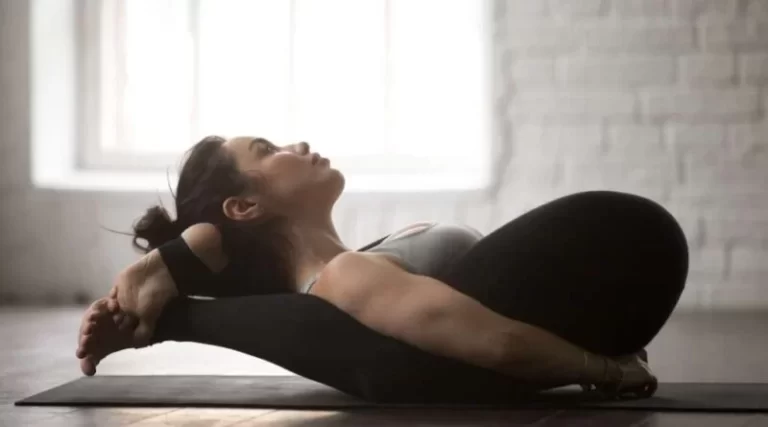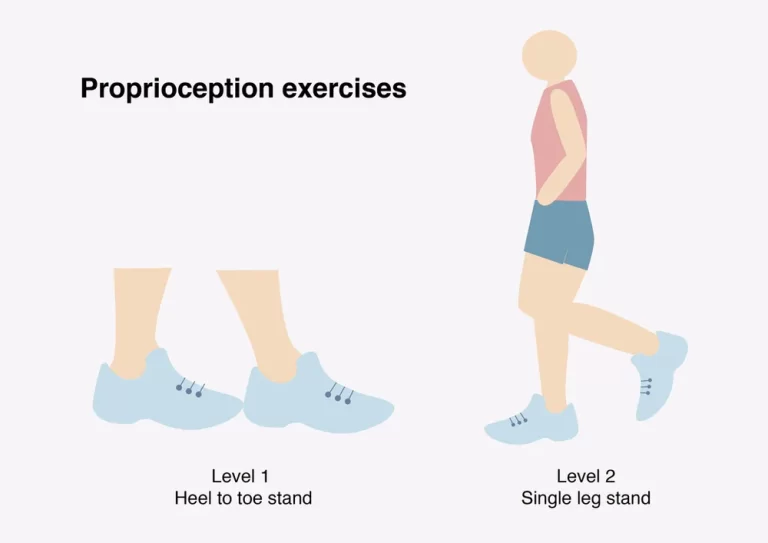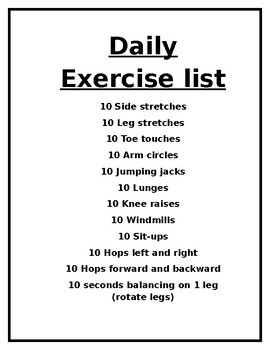Anterior pelvic tilt exercise: Health Benefits, Correction exercise variation, How to do?
Anterior pelvic tilt exercise is a great way to correct the Anterior pelvic tilt and also many health benefits associated with it.
In this article we discuss what is anterior pelvic tilt and how exercise is help to correct this deformity, health benefits and variation of this exercise.
What is anterior pelvic tilt exercise?
The anterior pelvic tilt occurs when your pelvis including the hip and pubic bones, tilts or rotates forward side. This happens due to a muscle imbalance in the lower limb. A combination of weak and tight muscles pulls your pelvis forward. An anterior pelvic tilt may be occurring to a sedentary lifestyle or bad posture while prolonged sitting. Prolonged sitting may cause tightness of the muscles that flexed your hip (iliopsoas and rectus femoris) and extend your lower lumbar spine (lumbar erector spinae)which causes an anterior pelvic tilt.
The anterior pelvic tilt is mostly visible in a person as it gives the lower back an exaggerated arch and makes the glute muscles stick out. This anterior pelvic tilt exercise helps to strengthen your abdominal muscle and helps to stretch your lumbar spine. This anterior pelvis tilt exercise is used to correct the alignment of the lumbar spine with lordosis and pelvic tilt. This exercise helps to relieve chronic low back pain. This will activate the intrinsic muscle of the core. Which decreases strain over back.
How do you develop anterior pelvic tilt?
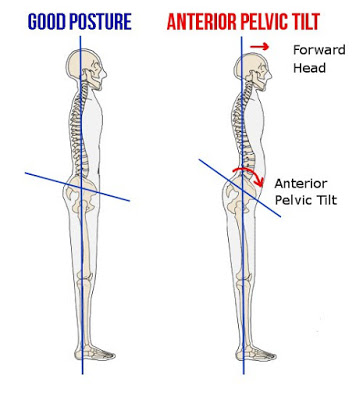
Some people’s muscles become tight as a result of certain lifestyle habits or muscular dysfunction. Factors that can lead to the risk of developing an anterior pelvic tilt include:
- Prolonged sitting cycling wearing high heels flat feet
- Lower back pain
- Hip and knee pain
- Incorrect posture
- Forced hip and knee rotations
- Tight and overactive muscles that may lead to anterior pelvic tilt include: quadriceps group muscles, or the anterior thigh muscles hip flexors, which are the little muscles in the front groin area
- Weak, under active muscles that can cause this condition include: gluteus group, which are the buttocks muscles hamstring group, the muscles are posterior thigh muscles rectus abdominis, known as the lower abdominals
Health benefits of anterior pelvic tilt exercise.
- Helps to strengthen your abdominal muscles.
- Tighten your abdominal muscles.
- Helps to decrease chronic lower back pain.
- Help to achieve flatter abs.
- Helps to improve the strength of pelvic floor muscle.
- Help to decrease lumbar lordosis induce by bad posture.
- Pelvic tilts are a safe way to work your abdominal muscles and stretch out the base of your spine.
- Helping relieve pelvic pain. Recommended at all stages of pregnancy to relieve back and pelvic pain.
- Helps to stretch the muscles of your lower back.
Anterior pelvic tilt correction exercise.
Basic pelvic tilt
How to do it?
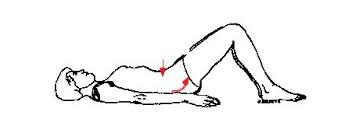
- To perform this exercise you have to lie on your back with both feet flat on the ground and your knee flexed sixty degrees.
- Now you have to press your lower back against the ground by tilting your pelvis backward.
- On inhale, you have to relax your lower back over the floor by tilting the pelvis forward.
- You have to try only to move your lumbar spine.
- Once you perfect in basic pelvic tilt exercise, then you will progress the move and add in movement.
- Add the movement that will engage your core muscle to work harder to stabilize.
Pelvic tilt march
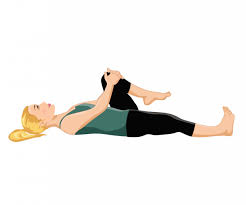
How to do it?
- To perform this exercise you have to lie on your back with your feet flat on the ground and your knee bent up to 60 degrees.
- Now you have to press your lower back against the ground while exhaling by tilting your pelvis backward. Once you have engaged your abdominals ad tilted your pelvis you have to raise one foot from the floor.
- Bringing your knee towards your chest touches your foot down to the floor.
- When you bring your knee towards your chest, your low back is firmly on the floor.
- Now repeat this exercise on another knee.
- When you are confident in this exercise then you become to increase the speed of doing this exercise.
- Repeat this for 4 to 5 sets with a 10 to 15-second break in between.
Pelvic tilt with the double knee
How to do it?
- To perform this exercise you have to do a basic pelvic tilt first then move your both knee towards your chest.
- Move slowly and make sure to keep your lower back against the floor as you raise your both knees. If at any part of the movement you feel your abdominals are not engaged and your lower back not firmly pressed to the floor.
- Then go for the initial position and just practice pelvic tilt march once you have expertise in that movement then go for it.
- It is more important to do qualitative movement rather than progression.
- Repeat this for 4 to 5 sets with a 10 to 15-second break in between.
Pelvic tilt with single leg lowers or scissor ab exercise
How to do it?
- To perform this exercise you have to engage your abdominals for basic pelvic tilt and raise your both leg towards the sky.
- Try to engage your abdominals and your back press towards the floor.
- Now take your right leg down to the floor at this movement your abdominals will be harder to stay engaged.
- Our goal is to lower the leg so that your heel is just hovering off the floor. When you lower the leg make sure you have to engage your abdominals and glute as well. Then keep the leg straight, and elevate again. Now put your left leg down.
- You can also increase the range of motion as you become better able to activate your core muscle.
- If at any point your low back does not press firmly then go for an easy variation of pelvic tilt like a double knee tuck.
- Do this for 2 to 4 sets with 10 to 15 repetitions.
Pelvic tilt with double leg lowers or leg lower ab exercise
How to do it?
- To perform this exercise you have to engage your abdominals for basic pelvic tilt and raise your both leg towards the sky.
- Try to contract your abdominals and your back press towards the floor.
- Now take your both leg down to the floor at this movement your abdominals will be harder to stay engaged.
- our goal is to lower the leg so that your heel is just hovering off the ground.
- When you lower the leg make sure you have to engage your abdominals and glute as well.
- If at any point you feel your low back off the floor stop performing this variation of pelvic tilt and go for the easier way like double knee tuck and scissor abs exercise.
- Either you reduce the range of motion.
- Make sure that your both leg should straight as you can throughout the exercise.
- With all of these progressions, you can place a towel under your low back to help make sure you are pressing your back down to the ground.
- It places exactly under your low back and then engages your abs and glutes with the Pelvic Tilt exercise.
- Perform this for 4 to 5 sets.
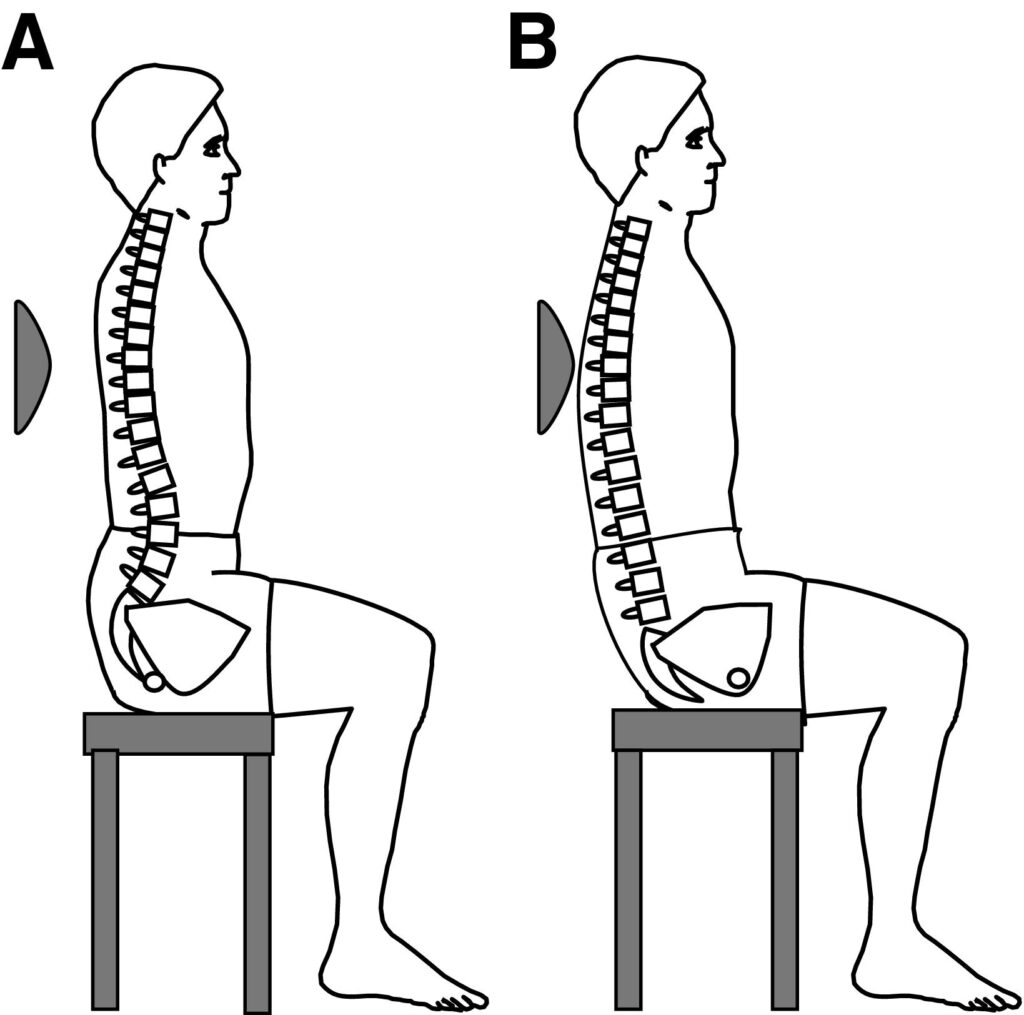
Seated Pelvic Tilts
How to do it?
- For performing this exercise you need one table of the medium size.
- You should be able to sit on it with your hip slightly above then your knees. When you are seated at a table.
- First, you inhale and your foot and shoulder are in a wide base of support.
- Take help from your core muscle to maintain proper posture and balance on the table.
- Now you have to exhale and tuck your tail bone in rolling slightly forward on the table.
- Now you take a deep breath in as you press your tailbone backward and forward away from your foot and back to your initial position.
- Do 6 to 10 repetitions in one session. Repeat this for 4 to 5 sets daily with 10 to 15 repetitions.
Half-kneeling hip flexor stretch
How to do it?
- Half-kneeling hip flexor stretch will help to relax the hip flexors and improve your hip joint mobility.
- Step your right leg out in front of you and lunge until your left knee is resting on the wall.
- put a towel under your knee if this is uncomfortable.
- Your right leg should make a ninety-degree angle at your knee.
- Bring your pelvis forward by tightening your glutes and abdominal muscles.
- Lean forward from your right leg until you feel the tension in the hip flexor and inner thigh of your right leg
- Hold for thirty seconds, release, and repeat up to five times.
- Do this for another leg.
Bridging exercise

How to do it?
- Bridging exercise will help to strengthen your hamstrings and your gluteus muscles. To perform this exercise You have to Lie on your back with both knees bent up to ninety-degree feet flat.
- Exhale as you lift your bottom back up from the ground.
- your thighs and inner feet should be parallel.
- Your spine should form a straight line from your shoulders to your knees.
- You may rest your arms with hands palms down by your sides them together and extend them along the floor beneath you.
- Hold for 30 seconds to one minute.
- Now take down your back to the ground and repeat this 5 to 07 times in one session.
- You also perform this exercise three times a day.
Kneeling leg lift with back stretch
How to do it?

- This exercise will help to engage your core muscle and help to stretch your lower back and your gluteus muscles.
- Take a bird dog position with your hands and knees get down. Put your hands on the ground with shoulder-width apart. put your hip and your knees in a straight line.
- Make sure your back is parallel to the floor so your pelvis is in a neutral position. Pull your tummy button in toward your spine and arch your back as you breathe out.
- Hold for 4 to 5 seconds, and then bring your spine back to the neutral position.
- Extend one leg back and elevate it until it reaches the same height as your body, so your lifted leg and body are in the same alignment.
- Try to maintain your spine in a neutral position. Hold this position for 5 to 10 seconds, lower the leg, and repeat ten times.
- Now do this for another leg.
- This exercise will help to strengthen your abdominal and gluteus muscles and your back muscles.
Squats
How to do it?
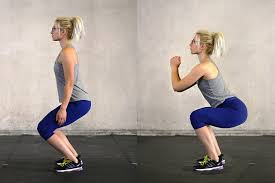
- Squatting is a full-body exercise that helps to strengthen your gluteus muscles, hamstrings, and quadriceps muscles with others also.
- Lower down your whole body like a sitting position until your both thighs are parallel to the ground.
- Make sure you are keeping your abdominal muscles tight and your back in a starting position.
- Push up to a standing position and move your pelvis slightly forward by tightening your gluteus muscles.
- Do this 15 to 20 times.
Complications
Anterior pelvic tilt increases pressure on your lower backbones. This pressure may cause muscle fatigue and other issues, like as:
Tension in your neck muscles lower back pain Inward rotation of the hip and knee pain in the hip and knee. pressure on hip flexors causing sciatica People who suffered from neck and lower back pain alongside an anterior pelvic tilt should visit a physical therapist.
Even if anterior pelvic tilt exercise is not causing any pain, it is vital to work on lengthening tight muscles and strengthening weak muscles to correct the bad posture.
When did you not do this exercise?
- If you are suffering from severe back pain.
- If you feel any pain during exercise.
- If you have just delivered after pregnancy.
- If you are healing from any surgery injury of your back, abdomen, pelvis, hip joints, knees, or ankles.
- If Your Doctor refused to do this exercise.
- If exercise will increase your symptoms.

